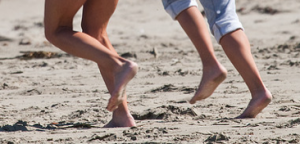Formerly a Confederate blockade runner named the. WebIts location in Fort Steven State Park makes it one of the most accessible and visible shipwrecks on the entire Oregon coast. Milwaukee was decommissioned on 7 March 1917 and her hull fractured a year and a half later in November 1918. Fish, Shirley. The Mountain of a Thousand Holes: Shipwreck Traditions and Treasure Hunting on Oregons North Coast. Special Issue. USS Milwaukee USS H-3's failed savior, USS Milwaukee (C-21), was a St. Louis-class protected cruiser displacing 9,700 tons. Its rusty hull rises from the sands at Fort Stevens State Park. It's also the home of the Lightship Columbia, one of the most interesting maritime attractions in the state. #Salinas #SalinasRiver #SalinasRiverNationalWildlifeRefugr #MontereyBay #LonelyBeach #RustyBoat #Shipwreck #RustyBarge, A post shared by ciderdemon (@octobersshorty) on Aug 25, 2016 at 2:13pm PDT. The freighter, New Carissa, grounded on the North Spit near North Bend, on February 4, 1999. The hurricane-force winds reach up to 73 miles per hour, forcing the ship into dangerous territory on its voyage. Boston, Mass. This is a site dedicated to shipwrecks which are still visible on beaches around the world. We use cookies to ensure that we give you the best experience on our website. The schooner Bella lurks under the shallow waters of the Siuslaw River in Florence. Research Lib., 68159, photo file 267, Courtesy Oregon Hist. The Peter Iredale was a four-masted barque sailing vessel that ran ashore in 1906 as it journeyed to the Columbia River (no surprise thereGraveyard of the Pacific, right?! Ship drifted south and ran aground at Tillamook Head. Heavy fog prevented the pilot from seeing its red cautionary light. Several of the Natives came to the fort. Share your Graveyard of the Pacific stories below! The rusted boiler is all that remians of the wreckage, at what is now known as Boiler Bay. The 80 passengers and 30 crew members were all saved. Named for the chunks of beeswax that have washed ashore near Manzanita, the Beeswax Wreck is supposedly the remains of a galleon that wrecked off the rocky coastline around 1700, destined for Mexico. For centuries, beachgoers near Manzanita, Oregon have picked up porcelain and chunks of beeswax that local legend claimed came from a shipwreck dubbed the Beeswax Wreck. Now, archaeologists have churned up an even greater treasure timber from the doomed ship itself. For hundreds of years, steamers, schooners, square-riggers, freighters and tugs vessels of every stripe and from all over the globe have met their fate off the Oregon Coast. Indeed, the Oregon Coast is known for its angry waters, and the exhibit takes a closer look at a few of the nearly 3,000 wrecks off its shores. Constructing such a large galleon required some two thousand trees, and the Philippines furnished forests of excellent hardwoods, including teak. Oregon Coast The Mauna Ala after running aground on the Clatsop Spit, December 10, 1941. Of all the ships in the Steamboats of the Oregon Coast, the wreck of Mary D. Hume (largely still intact!) Many wrecks occurred at river bars where strong currents carrying sand and other deposits cause the river bottom to continually change. The Age of Trade and the Dawn of the Global Economy.
